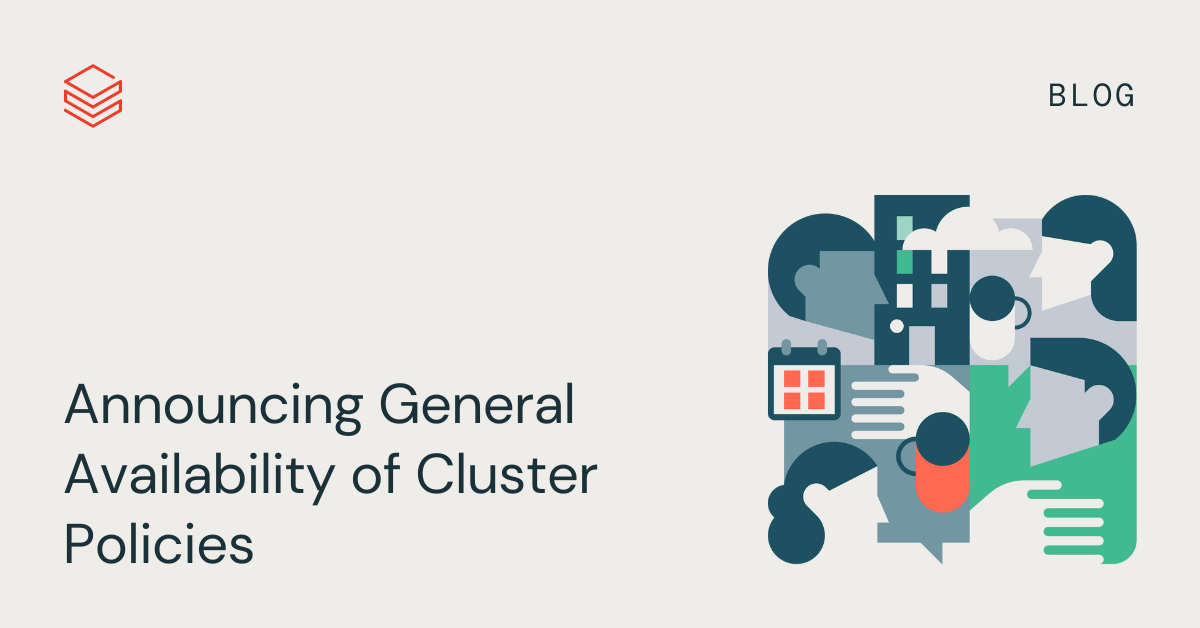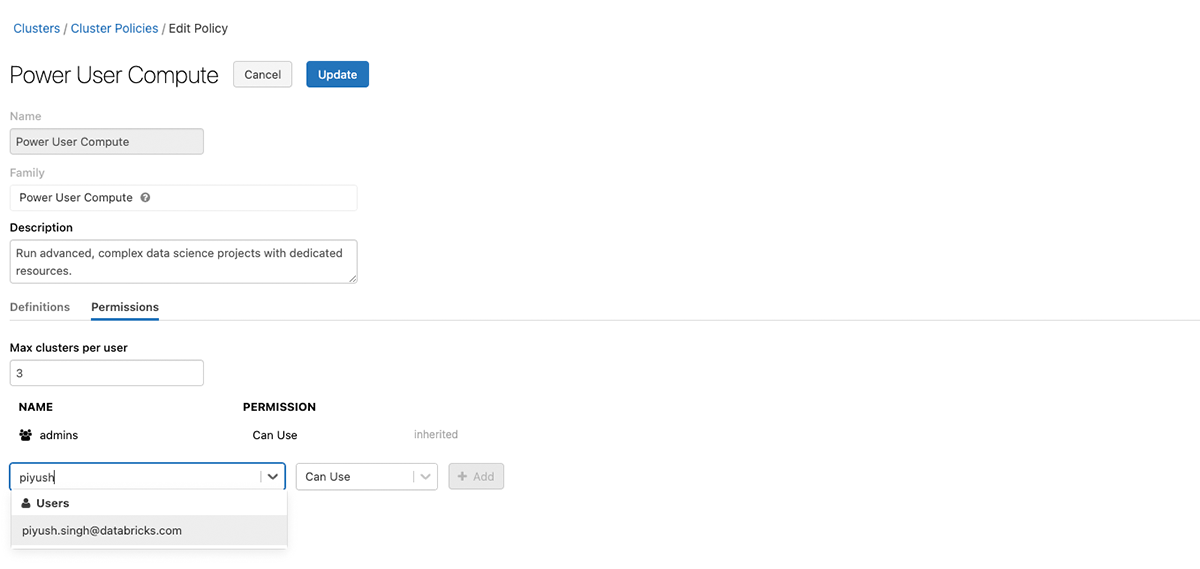Announcing General Availability of Cluster Policies

We are excited to announce that cluster policies are now generally available.
Why Databricks cluster policies?
Databricks cluster policies enable administrators to:
- limit costs by controlling the configuration of clusters for end users
- streamline cluster creation for end users
- enforce tagging across their workspace for cost management
Databricks also provides preconfigured cluster policies for three popular use cases: personal use, shared use, and jobs. Administrators can also customize their own policies or edit the preconfigured options.
How to Use Cluster Policies
1. Grant Access to Cluster Policies
To get started, administrators grant users access to the Databricks (or custom) cluster policies per workspace in the policy UI:

2. Creating Clusters from Policies
After an administrator has assigned policies to one or more users, the users will see the policy on the Compute page.

Users can then create their clusters knowing they are in compliance with administrators' guidelines.
Get Started with Policies Today
You need to be on Databricks Premium Tier or higher to use administrator-defined compute policies. Databricks-defined policy families will be available on all tiers in the coming months.
As a Databricks admin, you can go to the "Clusters" page, the "Cluster Policies" tab to create your policies in the policy JSON editor. Alternatively, you can create policies via API. See details in Databricks documentation - Cluster Policies (AWS, Azure).

